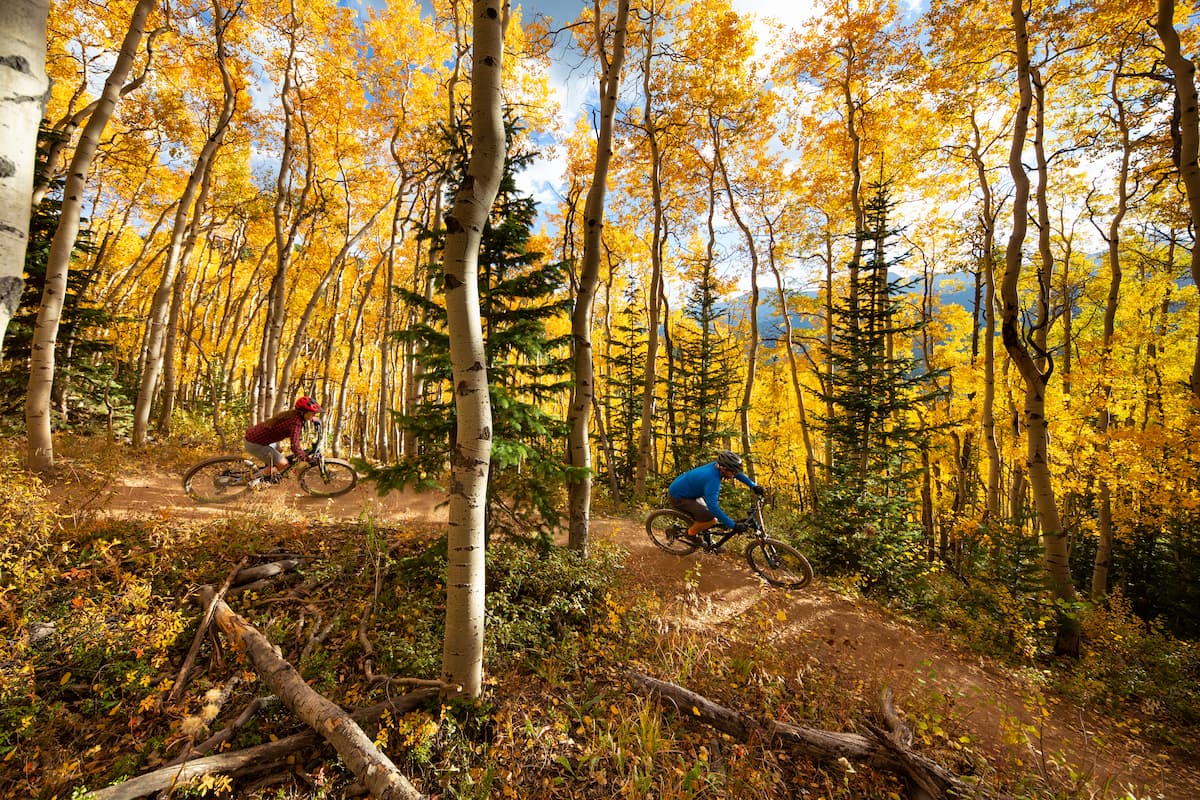
- High Country Conservation
- November 18, 2024
- Ask Eartha
Dear Eartha, were October’s warm temperatures a fluke or a sign of climate change?
It was so warm in October that I started tracking daily temperatures in a spreadsheet. Day after day, the forecasted high was several degrees above average. I basked in the lingering sunshine and t-shirt weather, delighting in the extra dose of summertime. But I also knew that it was unusual.
Now that October is over, weather data from the National Oceanic and Atmospheric Administration (NOAA) shows just how unseasonable it was. Throughout the entire month, average temperatures were 7 degrees higher than normal. Weather stations across Summit County experienced record highs on seven different days. It was 75°F in Dillon on October 5. Nighttime lows were hotter, too – nine October nights tied or broke records for (bear with me) “highest minimum temperature.” Statewide, October 2024 was the second hottest October since 1895. In summary, October was warm. But was it just a fluke or a trend?
Weather vs. Climate
On a given day, whether it’s sunny or cloudy or snowy, weather is caused by changes in the Earth’s atmosphere due to factors like air pressure, temperature, and wind speed. Generally speaking, high pressure systems bring good weather, like the stereotypical Colorado bluebird day. Alternately, low pressure can see more clouds and precipitation. In October, high atmospheric pressure combined with dry air blowing across the continent kept temperatures warmer than normal in Colorado.
Weather refers to these short-term fluctuations – think of it like a data point of a single day for a specific area. Climate, then, is the average of those data points over long periods of time. As NOAA puts it, “Weather tells you what to wear each day. Climate tells you what types of clothes to have in your closet.”
Our Changing Climate
So, when are warmer temperatures related to weather and when are they evidence of climate change? Well, we can’t point to any single day’s weather and conclude it was caused by climate change. But we can look at trends over time. For example, every 10 years, NOAA updates 30-year averages for variables like temperature and precipitation. Known as “Climate Normals,” this data allows us to compare current weather with long-term observations. That’s how we know that temperatures across the United States and Colorado have been increasing over time.
In fact, average annual temperatures in Colorado increased over 2°F from 1980 to 2022. Take note, the greatest amount of warming has been observed in the fall. Average autumnal temperatures increased over 3°F in the same time period. The summer-like temperatures experienced in October 2024 align with these trends – and were predicted by climate models run in the 2000s. State climatologists are very confident that Colorado will continue to heat up in the coming decades.
It’s the same pattern reflected across the entire planet. And now, some scientists are worried that warming is accelerating at an “absolutely gobsmackingly bananas” rate. What does this mean for Colorado? More frequent heat waves, droughts, and larger, more intense wildfires – all of which will stress our communities, our infrastructure, our economy, and our health.
The Future is Now
Often when we hear about climate change, information is presented in the future tense. The impacts are future oriented: By 2050, Colorado’s average temperatures will increase an additional 1 – 4°F compared to today. Goals are future oriented, too: By 2050, Colorado will reduce greenhouse gas emissions 100 percent. In both scenarios, the future orientation makes sense; we can’t realistically stop burning all fossil fuels cold-turkey. That’s why there’s no better time than now for renewed focus on state and local action. Because there is hope; we know how to fix the climate crisis while also boosting the state economy, cleaning up our air, protecting our water supply, and increasing energy independence.
When a wildfire sparks on October 23 – or it’s a balmy 50° in mid-November – and you find yourself wondering if this is normal, the truth is that the baseline for “normal” has changed. Fortunately, Colorado is also normalizing climate action leadership – and that is one trend to be proud of.
Ask Eartha Steward is written by the staff at the High Country Conservation Center, a nonprofit dedicated to waste reduction and resource conservation. Submit questions to Eartha at info@highcountryconservation.org.
